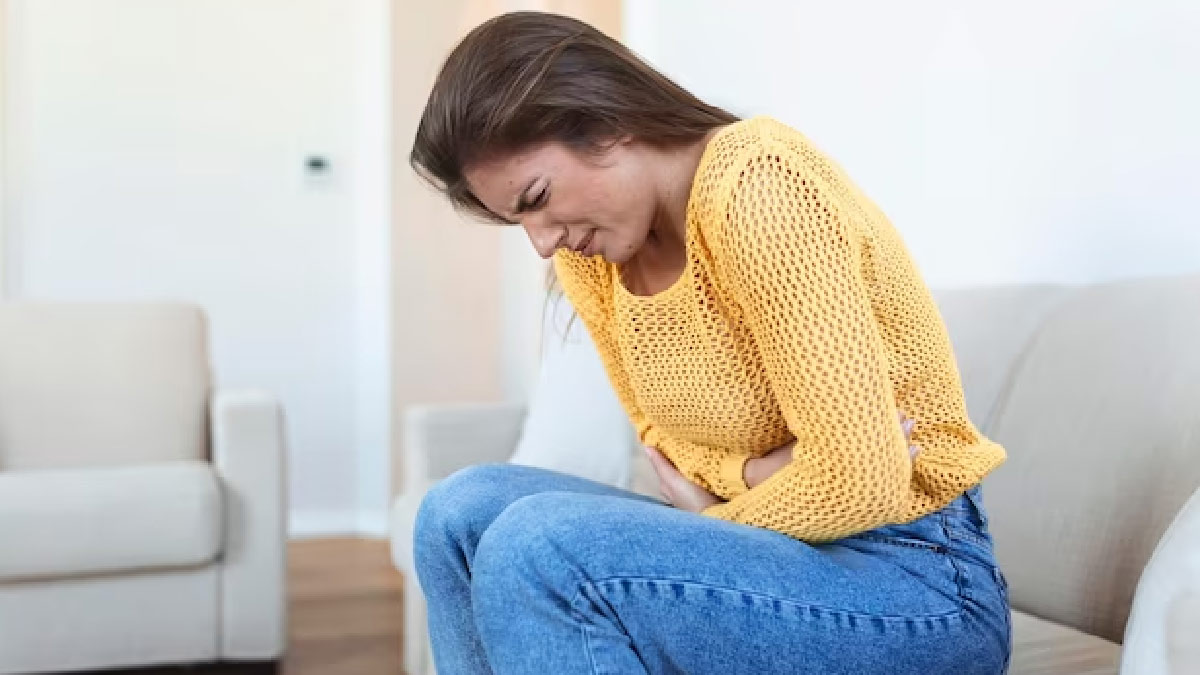
Menstruation is a natural part of the female reproductive system. It is characterised by vaginal bleeding that occurs for 3–7 days each menstrual cycle and, in some women, can be accompanied by painful cramps, bloating, and other health issues.
Table of Content:-
In certain cases, the symptoms can even begin a week or two prior to the menstrual period. This is also called Premenstrual Syndrome (PMS), which affects 20–32% of premenopausal women and 30–40% of the reproductive female population, according to a study published in the Journal of Clinical and Diagnostic Research. The conditions are usually normal and manageable with medications and home remedies. However, if cramps continue after menstrual periods or worsen even more, it is important to consult a healthcare professional. Here’s why…
Also Read: Menstrual Health: Expert Decodes 5 Menstrual Disorders
What It Means To Have Cramps After Menstrual Period

In an interaction with the OnlyMyHealth team, Dr Sameep Bhujbal, Consultant-Obstetrician and Gynaecologist, Jupiter Hospital, Pune, says that the majority of women experience cramps after menstrual periods, mostly due to lingering prostaglandin.
Prostaglandins are hormone-like substances that cause uterine contractions and are the primary reasons behind painful menstrual cramps. It is highest during the initial days of menstruation but gradually drops as bleeding continues and the lining of the uterus is shed. However, in certain cases, prostaglandin may stick around for a longer period than usual, leading to cramps that continue even after the menstrual period.
Causes Of Cramps After Period Has Ended
According to Dr Bhujpal, after-period cramps have the potential to be more severe and persistent than menstruation cramps.
“Post-period cramps might extend to your hips and thighs, while menstruation cramps usually affect your lower abdomen and back. They may also be accompanied by gastrointestinal problems, bloating, or nausea that you wouldn't get during your period,” he highlights.
Many factors and underlying medical conditions can cause cramps after a period. These include:

Ovulation: Ovulation refers to the period when your ovary releases an egg. It occurs in between your menstrual cycles and is usually asymptomatic. However, in some women, it may cause pain, also known as Mittelschmerz (middle pain in English).
Ectopic pregnancy: This condition occurs when a fertilised egg grows outside the uterus. According to the American College of Obstetricians and Gynaecologists (ACOG), more than 90% of ectopic pregnancies occur in a fallopian tube.
Endometriosis: Endometriosis affects about 10% of reproductive-age women and girls worldwide, according to the World Health Organization (WHO). It is a disease that occurs when tissue similar to the lining of the uterus grows outside the uterus, leading to symptoms such as pelvic pain.
Fibroids: One of the most frequent reasons for excessive bleeding throughout the menstrual cycle and after includes fibroids, which are benign growths that can form anywhere in the uterus. Some of the common symptoms include irregular bleeding, heavy periods, pelvic pressure and pain, and constipation.
Ovarian cysts: Another common cause of cramping after a period are ovarian cysts. While most cysts in the ovaries go away on their own, large cysts may cause complications and require medical attention.
Also Read: Menstrual Health: Tips To Deal With Period Irritation
How To Treat Such Cramps?

“Managing or treating such cramps involves a multifaceted approach,” says Dr Bhujpal. These include:
- Using heat treatment, such as a heating pad, to relax uterine muscles
- Over-The-Counter pain medications to reduce inflammation and discomfort during periods
- Adequate water intake
- Consuming anti-inflammatory foods
- Reducing stress by practising yoga and meditation
- Light abdominal massage
- Taking a hot shower
Conclusion
Menstrual cramps are usually normal and do not indicate an underlying issue. However, if painful cramps continue even after your period ends, it may be a sign of reproductive disorders like endometriosis, ovarian cysts, and fibroids. The key is to visit a healthcare professional and receive a proper diagnosis. Depending on the underlying problem, a doctor can help you determine the course of treatment.
Also watch this video
How we keep this article up to date:
We work with experts and keep a close eye on the latest in health and wellness. Whenever there is a new research or helpful information, we update our articles with accurate and useful advice.
Current Version